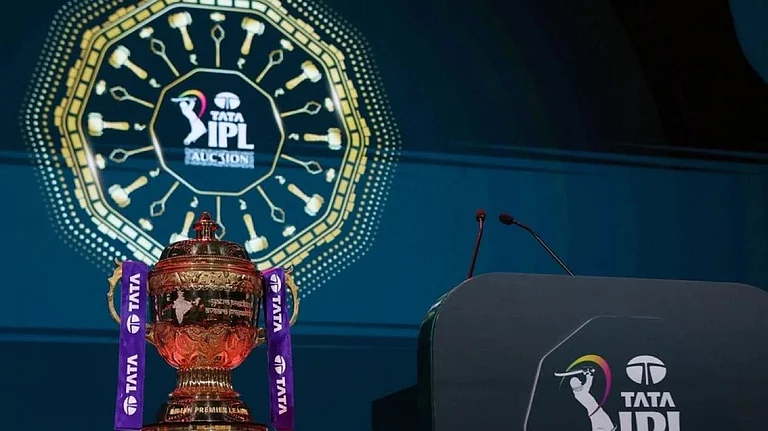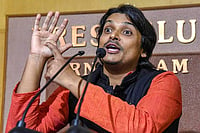Mukarram was an offspring of the union of the two greatest Muslim dynasties of their time. Through his Indian grandmother, he was a descendant of Prophet Mohammed; through his Turkish mother, a descendant of the last Caliph of Turkey. The dynasty had been founded in bloodshed and intrigue in the 17th century under the Mughal emperors and in 1724 became an independent state.Since then the city and the state of Hyderabad had been synonymous with culture, opulence and intrigue.
No one understood the highly developed hierarchies of India better than the class-conscious British, who set about dividing the maharajas into tiers, measuring the rank of their state by the firing on all formal occasions gun salutes, descending in odd numbers from 21 to nine. Hyderabad, the wealthiest and most populous, wasthe only 21-gunner.
At the urging of his beautiful, cultivated mother, and against his grandfather’s wishes, Mukarram was sent to Doon School, then to Harrow, Cambridge and Sandhurst in England. His mother despaired of his obsession with machinery. At 35, Mukarram inherited the title from his grandfather, after he disinherited his son for being a "moral pervert" with "sadistic" tastes.
By the 1960s, when Mukarram inherited the title of Nizam, Hyderabad remained an island of feudal and archaic Mughal culture in an India desperately seeking to modernise herself. Mukarram, educated at Harrow and Sandhurst, was a man caught between his inheritance and the forces of modernisation. His official title, as it was proclaimed by the president of India in 1967, was "His Exalted Highness, the Rustam of the Age, the Aristotle of the Times, Wal Mamuluk, Asaf Jah VIII, the Conqueror of Dominions, the Regulator of the Realm, Nawab Mir Barakat Ali Khan Bahadur, the Victor in Battles, the Leader of Armies, the Nizam of Hyderabad andBerar." It may have been meaningless, as the princely states had ceased to exist, but the Maharajahs were allowed to retain their titles until 1971.
Before World War II, the seventh Nizam was said to be the richest man in the world. In 1949, the New York Times reported his wealth was over $2 billion and "his pearls alone would fill an Olympic-sized swimming pool". He used the 185-carat Jacob diamond as a paperweight, yet wore a 50-shilling suit, haggled with stall-keepers over the price of soft drinks, bathed in his clothes to save on laundry and smoked cheap Charminars. The old Nizam had four wives, 40 concubines, 33 children and a staff of 10,000. Thousands of specially cooked meals were distributed daily to every family member, the portions weighed and graded according to the recipient’s position. At the palace dispensary, pills of almonds ground in opium were distributed to whoever wanted them. Those who preferred alcohol were given pegs of whisky or brandy. Some of them were tramps and beggars, but the old Nizam set them up with wives and fine suites.At his death in 1967, there were 300 cases of champagne from the 1930s, all undrinkable; of 60 cars, only four could be driven. There were rooms full of pearls, emeralds and diamonds.
Mukarram Jah, the new Nizam, brought in his own guards to safeguard his inheritance, but the looting began almost immediately and continued for decades. On April 6, 1967, a Mughal-style durbar was held to install him. At the end of the ceremony, the Oldsmobile that was to carry the royal couple broke down. Amid the solemn ritual, the exotic splendour and a crowd of tens of thousands all Mukarram could think of was how he would fix the imported V8.
Five years later, the seventh Nizam's teeming beneficiaries were still contesting the 54 trusts he left behind. In 1971, Indira Gandhi had stripped the 279 remaining princes of their privy purses and titles. Overwhelmed by his lot, Mukarram flew to Western Australia and bought Murchison House Station, 160km from Geraldton and Havelock House (a Federation mansion) in Perth.
He immediately fell in love with the outback, with its openness and space as it was as far removed from the incestuous atmosphere of Hyderabad, where his own father was taking him to court."Abu Bakar (the first Caliph of Turkey who was his ancestor) was a shepherd, so I see no reason why I shouldn't be one," he once told a reporter. He would wear an Akubra hat, a dusty blue boiler suit and R.M. Williams work boots. His Turkish wife, Esra, appalled by the informality and isolation, returned to Londonin nine days. The locals treated and greeted him not with deep bows and salutations of "Your Exalted Highness" but withHow yer doin', Mukarram or Jah? Some even called him Charlie. Mukarram claimed to have personally graded 300km of roads and fence lines at Murchison House Station.
As he had done in India, with his grandfather’s estate, Mukarram took a totally hands-off approach, relying on manages to runhis business affairs. While he lived in Australia, the plunder of his properties and possessions in India was reaching epidemic proportions. Most of the valuables he left behind in India were sold off by the mid-1970s by his managers, cronies and family members. Projects on his Australian property were abandoned midstream, managers were regularly replaced. Mukarram would drive across Australia and then charter a Lear jet to get home. Murchison was strewn with abandoned graders, tractors and cars. On April 1, 1996, a liquidator was appointed for the property. Mukarram felt cursed and left Murchison that year to flee to his mother's homeland and a modest two-bedroom flat on the coast of Turkey.
His second marriage ended in tragedy. His Australian wife developed a relationship with a bisexual, divorced Mukarram and then died of AIDS in 1989. His younger son from this relationship died of a drug overdose in 2004. Mukarram got married 5 times and has now separated from his current Turkish wife.
In 1967, Mukarram inherited the largest fortune in the world, but now lives a life of simplicity and anonymity in Turkey. Zubrzycki claims to have been the only journalist, who has met him in the past decade. After many months of waiting, he was granted an interview barely six months ago. The meeting was arranged, not in a palatial house or hotel lobby as the author had expected,but in a very average building where Mukarram now lives by himself. His two-bedroom apartment overlooks the beautiful Mediterranean but the walls within are completely bare. No swords, no embroidered memorabilia or antiques anywhere. When Zubrzycki rang the doorbell, it was opened, not by a butler or servant, but by Mukarram.
Almost sixty years after Independence, and 36 years after Mrs Gandhi abolished the Privy Purses, our fascination with the fortunes of India’s maharajahs has not abated. Zubrzycki has written a fascinating account of the last Nizam enlivening the saga with a succession of anecdotes. He is a master story-teller and his book is rich in information and exudes historical authenticity.
Zubrzycki is a senior writer for The Australian whose 30-year long association with India has included stints as a Hindi student, diplomat, consultant and foreign correspondent. He has written extensively about India for Australian and international publications on subjects as diverse as buying an elephant in Bihar and avant-garde theatre in Manipur. One of his assignments on the sub-continent was in Pakistan and Afghanistan covering the aftermath of the September 11 attacks. He first uncovered Mukarram's extraordinary story in 1999 and returned to it with a grant from the Australia Council and the Australia-India Council.
A slightly shorter version of this appears in print

























